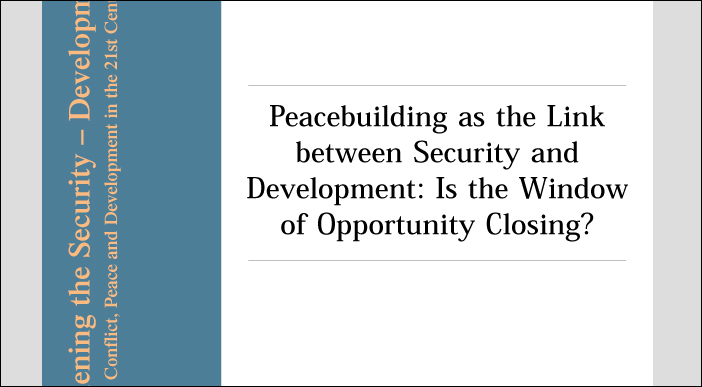 Since the end of the Cold War, it has become commonplace to assert that peace and development are intimately linked and that the United Nations and other international actors need to address these twin goals through concerted and integrated policies and programs. Shedding its early definition as “postconflict reconstruction,” the term “peacebuilding” has broadened its scope in the 1990s to encompass the overlapping agendas for peace and development in support of conflict prevention, conflict management and postconflict reconstruction. Yet, peacebuilding remains an amorphous and evolving project that continues to be tested, contested, and challenged by many quarters.
Since the end of the Cold War, it has become commonplace to assert that peace and development are intimately linked and that the United Nations and other international actors need to address these twin goals through concerted and integrated policies and programs. Shedding its early definition as “postconflict reconstruction,” the term “peacebuilding” has broadened its scope in the 1990s to encompass the overlapping agendas for peace and development in support of conflict prevention, conflict management and postconflict reconstruction. Yet, peacebuilding remains an amorphous and evolving project that continues to be tested, contested, and challenged by many quarters.
This paper starts with an effort to bring some clarity to the basic assumptions underlying the new peacebuilding agenda—focusing specifically on the links between security and development at both the international and domestic levels. It then reviews peacebuilding practice that developed in the 1990s, and finally, it examines the challenges that confront the international peacebuilding agenda during the first decade of the twenty-first century.
It is a dangerous undertaking to view international affairs in ten-year slices. It is even more dangerous to try to summarize a decade of peacebuilding practice which remains a work in progress. However, the international peacebuilding agenda is an ambitious project that carries with it the promise of important changes in international priorities and institutions that have evolved in the last sixty years. Thus, it becomes a special challenge to understand its achievements and identify the obstacles it faces—especially since the special window of opportunity that made it possible risks being closed in the post-September 11 environment unless serious efforts are made to move the agenda forward.







